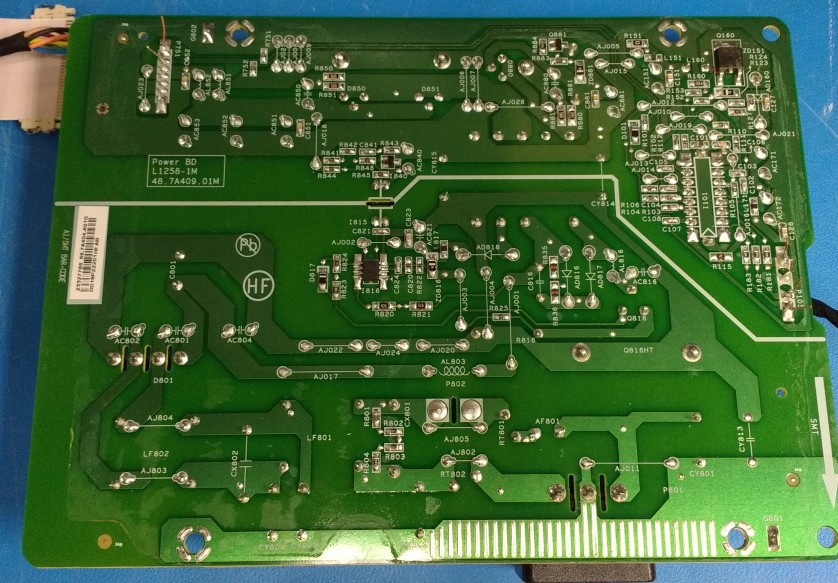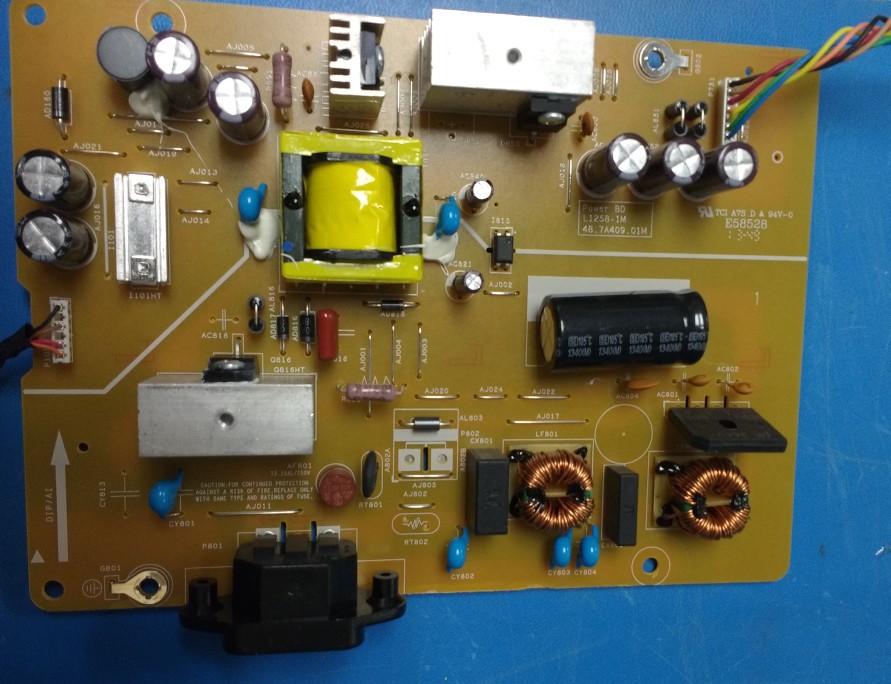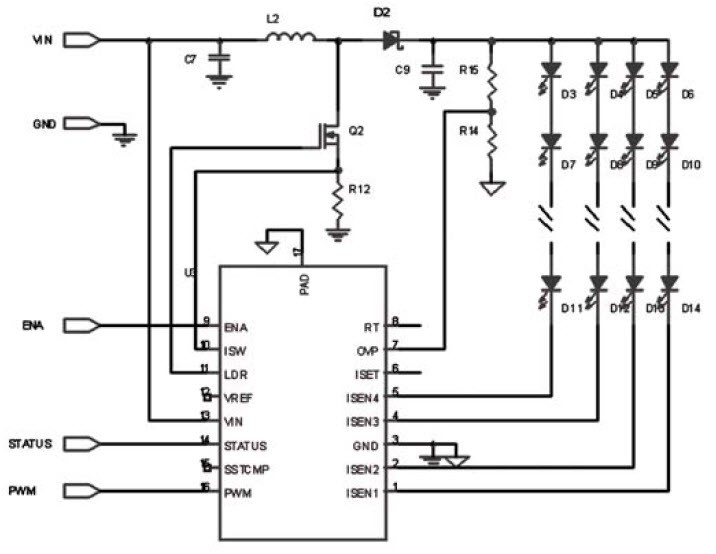This does call into question what the three lines to the backlight are. Perhaps they are not RGB, but instead are just different segments of the backlight. My first thought was to quick pull off one of those resistors and see how it changed, but remembering that they are glued down meant that was going to be a bit harder, and may damage the component. Instead, I simply used a bench supply at 30V, set to 30mA, and some a pair of DMM probes touching the connector pins briefly to see what happened. Indeed, the three lines appear to be different segments of the backlight. Bottom of the power board showing the backlight connector at left with pigtails attached. At upper left is the connector which goes to the control board.

It's a bummer, but understandable. My guess as to why there are three lines is so that the LEDs are not in parallel, but instead three series chains. Adding them all in series would have required over 90 volts, so this is a likely trade off. They could have added the resistors on the backlight boards themselves so that they would only need a single power pair(as is done when you purchase strips of LED lights), but maybe there is a reason they couldn't do that on the backlight board. I might find out when I take apart the panel itself. Power board top side:

The curiosity got to me, and I did in the end unsolder the driver heatsink to find out it is a OZ9998BDN. The only available data I could find on it is a quick datasheet, which indicates it is a 4 channel LED driver chip. As noted there, a good reason for spliting the strings into multiple is that it can operate even if one LED fails, leaving the other two strings working. As it is just a quick sheet, there are no electrical numbers, but thankfully there is an example circuit with pin numbers. That said, the pin numbers do not match, but the part is available in multiple packages, so that could be the discrepancy. Regardless, the example confirms the updated theory as it has an ENA and an PWM input. It also makes it clear that this chip itself is controlling a boast converter to supply the 34V. I can also compare the example and identify the key components in it.

Anyway, I put on some new thermal compound, soldered the heatsink back, and reassembled all the boards into the chassis, testing again that it does in fact, still work. Next up is to remove the LCD itself from the frame, leaving just the backlight.
 Quinn
Quinn
Discussions
Become a Hackaday.io Member
Create an account to leave a comment. Already have an account? Log In.